Where the Baby Boomers Led Us
When we went to the Women’s March in Washington D.C., just after the inauguration of President Donald J. Trump, we took the metro into the city. The station and the train were crammed with protesters and their signs. I remember one woman on the train, older than us, who was holding a sign that read “THIS ABOMINATION WILL NOT STAND.” I believe she was from the Baby Boomer generation, the generation that came before mine and that shook American culture apart in the Sixties, in a wave of youth protest. And here she was, elderly and still protesting, fifty years later, which is as long as I have been alive.
The abomination to which her sign referred was the election to the highest office in the nation of a man who stands for everything which she had fought against her whole life. A man who epitomizes entitled, obnoxious, and abusive white male power. A self-confessed serial sexual predator who thinks women should be grabbable at a rich man’s whim. A racist whose instinct is to treat non-whites like criminals – or worse. A lying corporate crony motivated by profits over people.
And yet here he was, propelled into the Presidency by the support of millions of ordinary Americans who were duped by his demagoguery and worshipped him as their savior. It was the raging apotheosis of the backlash against the Sixties that was behind the rise of the Republican party, a backlash by people resentful of an America that was more open, diverse and tolerant. More non-white and non-Christian. The backlash had just put into power a man the same age as this protesting woman, but an ignorant and crass bully – the worst of her generation, empowered by madness.
 When we arrived in the city the station was so crowded that it took an hour to get to the street. A huge mass of sign-carrying people slowly made its way through the turnstiles to exit the metro, and finally we were in the open air. We found our way to the mall and suddenly were swept up into a throng of protesters, streaming from where the speeches had been made (speeches we had missed, since it took so long for us to reach the city) towards the White House. The chanting, roaring energy was indomitable. It was the backlash against the backlash.
When we arrived in the city the station was so crowded that it took an hour to get to the street. A huge mass of sign-carrying people slowly made its way through the turnstiles to exit the metro, and finally we were in the open air. We found our way to the mall and suddenly were swept up into a throng of protesters, streaming from where the speeches had been made (speeches we had missed, since it took so long for us to reach the city) towards the White House. The chanting, roaring energy was indomitable. It was the backlash against the backlash.

But would it last? As of this writing, more than nineteen months have passed. Trump has proven to be as awful a President as anyone predicted – corrupt, cruel, a threat to the republic. His supporters are entrenched in their belief in his legitimacy; they voted for him, and his faults seem invisible to them. Meanwhile, the President’s opponents have adopted the language of resistance, like freedom fighters in an occupied nation.
Trump has captured the reactionary right because he is the champion of their agenda: to keep out the Hispanics and the Asians and the Muslims, to stop free trade with China, to restore America to its pre-Sixties greatness. In their minds, this agenda is a much-needed course correction after decades of American decline. And undeniably it is motivated by fear, a fear summarized by one simple headline: Fewer Births Than Deaths Among Whites in Majority of U.S. States.
It is sad that fear has overtaken a large minority, and that they have rallied around an unworthy man. But he was the one who spoke their language. As I write, his fortune is crumbling, and his supporters will no doubt stand by him to the bitter end. But in the long run majoritarian opinion and demographic pressures favor the resisters. The blue wave may have hit a red wall, but it can become a blue tsunami and take that wall down. We just have to stay resolved.
On the day after Donald J. Trump’s inauguration, we marched down the mall in the nation’s capital, until the streaming throng took us to the White House. There the crowd thinned out, as some people left, while others lingered. Some tables were set up and people held signs urging or promising the impeachment of a President who had been in office for all of one day. It was like a court being held, condemning him on his own front lawn. This was the site of the Boomer generation’s last stand, and they were as riotous, and as judgmental, and as destructive as ever. And this was where they had finally led us.

 We’ve been watching
We’ve been watching 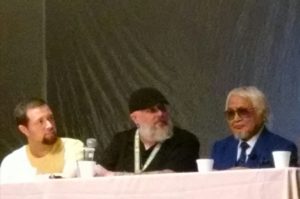
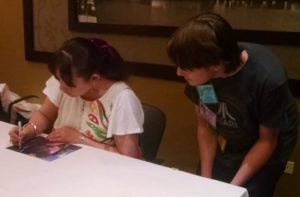
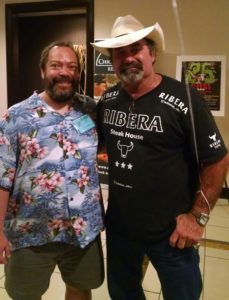
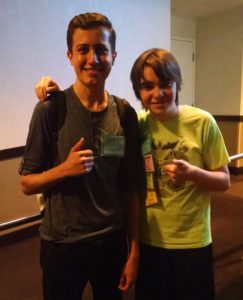

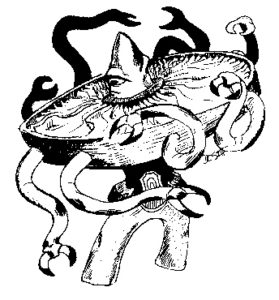
 A conversation with my BFF started with me Stevesplaining (a thing I do) the social history of tattoos.
A conversation with my BFF started with me Stevesplaining (a thing I do) the social history of tattoos. Last spring I posted
Last spring I posted 
